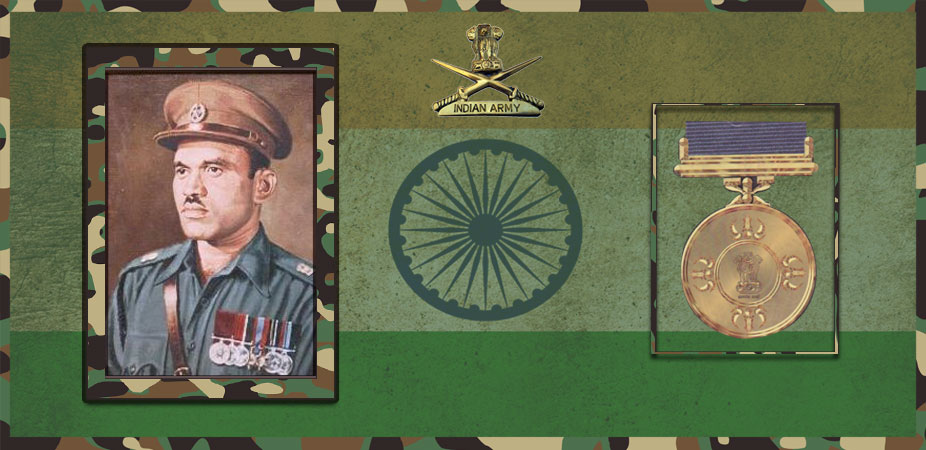Let's salute to our Indian Army together, We are proud to be Indian.
Let's salute to our Indian Army together, We are proud to be Indian.

Rama Raghoba Rane, PVC (26 June 1918 – 11 July 1994) was an officer in the Indian Army. He was a recipient of the Param Vir Chakra, India’s highest military decoration.
Born in 1918, Rane served in the British Indian Army during the Second World War. He remained in the military during the post-war period and was commissioned in the Bombay Sappers Regiment of the Indian Army’s Corps of Engineers on 15 December 1947. In April 1948, during the Indo-Pakistani War of 1947, Rane played a key role in the capture of Rajauri by Indian forces by being instrumental in clearing several roadblocks and minefields. His actions helped clear the way for advancing Indian tanks. He was awarded the Param Vir Chakra on 8 April 1948 for his gallantry. He retired as a major from the Indian Army in 1968. During his 28 years’ service with the army, he was mentioned in despatches five times. He died in 1994 at the age of 76.
Rama Raghoba Rane was born on 26 June 1918 in the village of Haveri in the Dharwar district of Karnataka. He was the son of R. P. Rane, a police constable from Chendia village of North Kanara district in Karnataka. Rane’s early education, mostly in district school, was chaotic due to his father’s frequent transfers. In 1930, he became influenced by the Non-Cooperation Movement, which agitated for Indian independence from Great Britain. His involvement with the movement alarmed his father, who moved the family back to their ancestral village at Chendia.
At the age of 22, Rane decided to join the British Indian Army, while the Second World War was in full swing. On 10 July 1940, Rane enlisted in the Bombay Engineer Regiment, and passed out as the “Best Recruit”, awarded the Commandant’s Cane. Subsequently, he was promoted to Naik (corporal).
After his training, Rane was posted to the 28th Field Company, an engineering unit of the 26th Infantry Division which, at the time, was fighting the Japanese in Burma. As his division retreated from the Japanese after the failed Arakan Campaign, he, along with his two sections, was hand-picked by his company commander to stay back behind at Buthidaung to destroy key assets and then be evacuated by the Royal Indian Navy. Though the objective was soon achieved, the expected pickup did not happen. This forced Rane and his men to cross a river that was patrolled by the Japanese to reach their lines. Rane, along with his two sections, expertly evaded the Japanese troops, and joined the 26th Infantry Division at Bahri. For his actions, he was promoted to havaldar (sergeant)
After the war, Rane remained in the military. In 1947, following his country’s independence, he transferred to the Indian Army. For his persistence and leadership qualities, Rane was selected for commission prior to the partition. He was formally commissioned in the Corps of Engineers on 15 December 1947 as a second lieutenant.